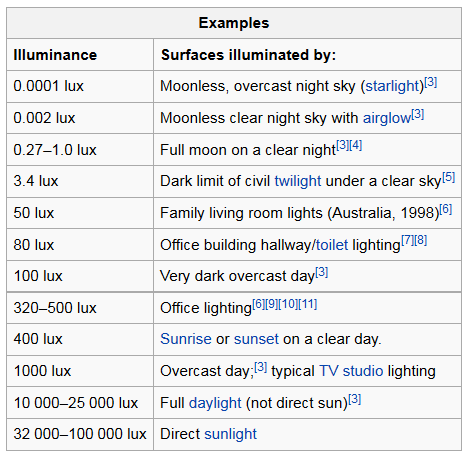TEMT6000 Ambient Light Sensor Hookup Guide
How Light Detection Works
Now that our sensor is working, let's take a more in-depth look at what is going on inside the senor. As mentioned earlier, the TEMT6000 measures illuminance. If you're unfamiliar with illuminance, it is a measure of the total quantity of visible light emitted by a source (referred to as luminous flux, measured in lumens (lm) divided by an area in square meters. More notationally, 1 lx = 1 lm/m². Along with these, there are other properties of light that are unfortunately all named using the same Latin root for light, so it can be hard to keep them straight. Here's a diagram to hopefully elucidate the differences:
Why does the TEMT6000 measure illuminance? In most practices, measuring the intensity of light without factoring in distance is very difficult, and puzzled early astronomers for a long time. In short, there is apparent magnitude (how bright a source appears) and absolute magnitude (how bright the source actually is). Two sources of different absolute magnitudes can have the same apparent magnitude depending on their distance from the observer.
For example, if you have a bright source far away and a dim source very close, they can appear to have the same brightness because the brighter source's light will have to dissipate over a larger volume. This is why the sensor will read a smaller value if you move the same source of light farther away from it, essentially increasing the amount of space that the same amount of light has to fill between the source and the sensor (i.e. reducing the illuminance, as you're dividing by a larger surface area of the light-sphere generated by the source).
Here is a graphical relationship between the current (in µA) and illuminance of the immediate vicinity perceived by the sensor:
The TEMT6000 only recognizes light with wavelengths in the range of 390–700 nm, which roughly covers the entire spectrum of visible light. In other words, this won't pick up infrared, ultraviolet, or any other light we can't directly see.
Here's a table of the typical illuminance from common sources of visible light:
Now that we understand the TEMT6000 a little better, let's use it in something more interesting and build ourselves a night light that turns itself on and off!


